1. Tell us about yourself. When did you start sailing?
I am Komal Jaiswal, from Azamgarh in Uttar Pradesh. I completed my pre-sea course (B.Tech. in Marine Engineering) at the Maharashtra Academy of Naval Education and Training in Pune. I am currently sailing with Synergy as a Fourth Engineer, having joined my first vessel as an Engine Cadet on 14th September 2019.
2. What or who motivated you to become a seafarer, and why?
I first learned of the maritime profession from reading an article when I was 14. At that time I suppose it was mainly the uniform and the discipline that attracted me, but having found out a good deal more I realised that it requires a lot of courage, mental and physical strength and determination.
Most who heard I was considering joining the merchant navy were not in favour of it – that is, they simply did not approve of girls heading into the profession, and that was probably because they somehow thought that physical strength was the key thing. But the idea of sailing captivated me, and in my heart I knew that if I did not go ahead I would regret it every time I saw the great, blue ocean.

3. Tell us about your Cadetship with Synergy and how your shipboard experience helped you prepare for your Class 4 examinations
The in-house training and orientation programmes provided by Synergy after induction helped me to learn a lot about the values and policies of the company. They also made me realise how very important it is to have every crew member’s contribution towards a healthy work environment on board. I was, and am, thrilled to be part of this excellent work culture.
The Object-Based Learning in Pune helped me as regards socialising with my colleagues and creating a healthy bond with them. The tasks that were set tested everyone’s capability to simultaneously work as a team and also manage time, which I personally found very helpful when on board.
The crew were, and always have been, friendly. The engine team always encouraged me to take part in all kinds of jobs. I even got the chance to be a small part of a visit to drydock, and it was a great experience for me.
The Chief and Second Engineers were very keen to teach me and they always emphasised all the safety regulations that need to be followed while working in the engine room. They persuaded me to complete my Training and Record book assignments, and the related tasks set out in them, every week. They also encouraged me to read through machinery manuals, drawings and line diagrams in order to be better prepared. They were both readily accessible and I never felt hesitant in seeking to clear my doubts with them, which was instrumental in my passing my MEO Class 4 Exams.
Other junior officers were helpful, too, as they guided me in understanding the jobs and responsibilities of a Fourth Engineer.
4. What does one need to do in order to pursue a career in Marine Engineering?
To do that one can either choose a four year B.Tech, as I did, by a Marine Engineering course after completing high school, or a one year Graduate Marine Engineering course after completing a B.E in Mechanical Engineering.
5. How many years of college did you go through and what type of education do you need to get to your current place in your career?
I did a B.Tech. in Marine Engineering, so it was four years at college. To reach a rank similar to mine, you first need to complete a Cadetship with a shipping company, involving a specified amount of sea time, and also perform the tasks provided in your Training and Record book and get that attested by senior management.
The next step is to submit your Training and Record book, with other supporting documents, to any Mercantile Marine Department (MMD) office. The MMD assesses these and decides whether you are eligible to go in for the MEO Class 4 exams.
Then, if you pass those, the MMD issues a Certificate of Competency, which certifies you to be an “Officer in Charge of Engineering Watch”, or Fourth Engineer.
6. What are the challenges you have faced on board as a woman seafarer?
In the wider marine world, I think there are two main things. Firstly – and this will have been said before – as the profession is still male-dominated, even nowadays in some places women sometimes have to make extra effort so that our male colleagues will always treat us as, say, a Cadet or an Officer, and not as a lady Cadet or Officer.
Secondly, and I suppose inevitably, in some ways, if she is the only woman on board it can sometimes be a bit harder for a female seafarer to be completely meshed, socially.
Synergy, though, tackles both these things, and like everyone I greatly appreciate the wholesome environment – ashore, as well as at sea – such that women can work successfully as part of their fleet.
7. If you ever changed to working ashore, what would you miss most about working at sea?
I would certainly miss the whole environment, working with machinery and the everyday challenges which enable me to identify my inner strength to tackle any situation. It would be very hard to change from that, and the quote that always motivates me, too (and which I have seen in several places) is “I have not come this far just to come this far”.
8. What advice would you give to anyone considering a career at sea, especially young women seafarers?
Two things. Anyone should consider this as a career only if self-motivated to work at sea. Also, do not worry about your gender – your hard work will dictate your success.



